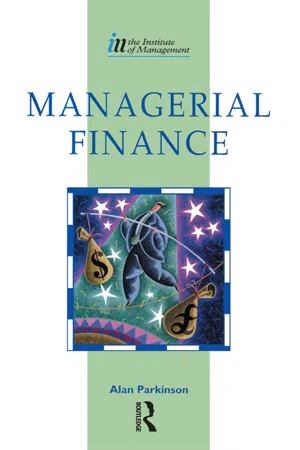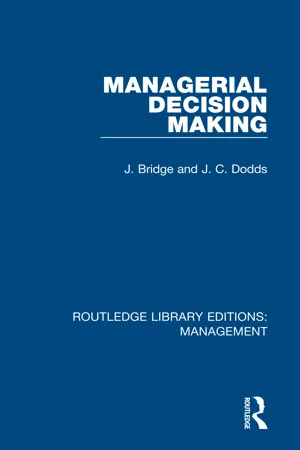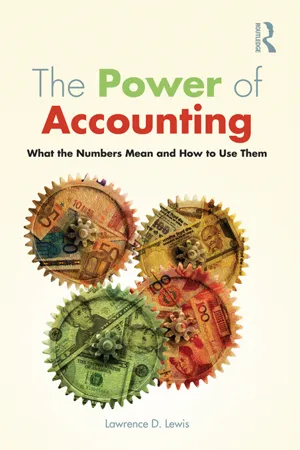Capital Investments
Capital investments refer to the funds allocated by a company for the purchase, improvement, or maintenance of long-term assets such as property, equipment, or technology. These investments are made with the expectation of generating future returns and are crucial for the growth and sustainability of a business. Proper evaluation and strategic allocation of capital investments are essential for maximizing profitability and competitiveness.
7 Key excerpts on "Capital Investments"
- eBook - ePub
Return on Investment Manual
Tools and Applications for Managing Financial Results
- Robert Rachlin(Author)
- 2019(Publication Date)
- Routledge(Publisher)
...19 Capital Investments—The Key to Higher Profits, Cash Flows, and Return on Investment It is an accepted fact in business that Capital Investments are a key element of a company’s long-term growth. Why are they so important? They provide a continuous flow of future profits and cash needed for operating and investment decisions. It must be also recognized that all products and services have a life cycle, at the end of which they will no longer appeal to the marketplace and will be replaced by other forms of products or services. Although people generally associate life cycles with products, services have them also. Just look at bank services offered ten years ago and those being offered today. Therefore, in every business, new products and services must be provided to replace technology, to meet changing population trends, to meet obsolescence, to meet economic changes, and to meet changing end-user demands. This chapter discusses the vital role top management plays in capital investment decisions, the classifications and process of Capital Investments, the methods of financing, and an example illustrating how debt can reduce the average weighted cost of capital. Chapter 20 provides the step-by-step methods for calculating and evaluating Capital Investments and concludes with examples of actual firms’ capital investment policies and procedures. Why Capital Investments Are Important Decisions on Capital Investments are extremely important to the continuous success of the company, and therefore top management usually assumes direct responsibility for the larger and more important expenditures. Because of the nature and substantial amounts of the expenditures, these capital investment decisions are important and deserve the attention of top management for the following reasons. Substantial Amounts of Money Most expenditures that are governed by the policies of the capital expenditures program involve substantial amounts of money...
- Michael Chibili(Author)
- 2019(Publication Date)
- Routledge(Publisher)
...15 Capital investment decisions 15.1 Types of capital budgeting decisions 15.2 Basic methods for making investment decisions 15.3 Simple and compound interest 15.4 Process of discounting 15.5 Understanding factor tables 15.6 Discounted cash flow (DCF) methods 15.7 Incidence of taxes on DCF analysis 15.8 Choosing between projects Businesses are created with the aim of existing forever. For this to become possible, the business must be able to earn profits over a period of years. In this case, short term gains might have to be sacrificed in the interest of long term goals. Decisions that involve the acquisition of equipment, land, buildings, and vehicles are examples of decisions that businesses will periodically have to make that have an influence on their cash flows. In the hospitality industry, the largest investments that are normally made will be about land or building acquisition. However these are not decisions that are made on a day-to-day basis. Whether the opportunity involves building a new hotel, modernizing an old one, or extending a hotel, money must be made available and spent on what might be called a ‘capital investment’ that is expenditure incurred now in order to produce a stream of benefits over a period of years which will, it is hoped, result in the firm being in a more favourable position...
- eBook - ePub
- Alan Parkinson(Author)
- 2012(Publication Date)
- Routledge(Publisher)
...A common feature that all capital budgeting decisions have with shorter term investments is that managers are looking at making investments which will (hopefully!) produce returns. The distinction is that the longer term investment decision will produce returns over a number of future time periods rather than the current period returns which arise from other types of decisions. Capital investment decisions will generally be concerned with the planning for and management of activities such as: the acquisition of fixed assets such as land and buildings, plant and equipment and vehicles (be it a first-time or replacement acquisition) investment in a special project such as a marketing/advertising campaign or research and development the expansion of current facilities, be they production or administrative or in relation to any other entry into new product/service provision investment in development of managers, such as yourself, through training and education. Such investment decisions are never easy Often, given the long-term nature of the decision consequences, the projected outcomes and associated returns are at best uncertain and at worst unpredictable and/ or intangible. Given this scenario it is understandable that many managers seek advice from all quarters as an aid to reducing the risk of making the wrong capital investment decisions. What they invariably seek is a framework, at least from a financial angle. A framework for predicting the future If you as a manager had the opportunity to design an appropriate advisory framework from scratch, it is likely that you would wish the design to help you to solve certain key problems which might hamper your effective decision-making...
- eBook - ePub
- Mick Broadbent, John Cullen(Authors)
- 2012(Publication Date)
- Routledge(Publisher)
...In addition, such decisions involve senior managers, usually at board or equivalent level. The reason for all this activity is that: Capital investment projects will have an impact on the organization for several years to come. It is worth-while, and probably cost efficient, to put time and effort into the evaluation stage of such a decision before large sums of money are expended. Even if a project is rejected after the evaluation stage, the process of evaluation will have provided a useful learning exercise, and may have discovered issues not obvious at the earlier stages of consideration. Capital investment is dealing with major investments that will shape the future of an organization. Such decisions are of strategic importance and must be evaluated to enable the organization to justify to its stakeholders that it is pursuing projects in the pursuit of its strategic plan. Once a major project has received approval, and implementation is going ahead, it is usually very difficult to reverse the process without incurring significant costs. For example, a farmer may wish to convert some land into a golf course. Significant expenditure is required for planning permission, consultancy for course design, landscaping, club house construction etc., before any revenues are received. To abandon the project before fruition would be costly indeed, although the land could be easily returned to agricultural use. Because capital investment decisions involve the commitment of resources now, hopefully for future benefits, they are all subject to risk...
- eBook - ePub
- J. Bridge, J. C. Dodds(Authors)
- 2018(Publication Date)
- Routledge(Publisher)
...8 The Investment Decision 8-1 Introduction — The Nature of the Investment Decision Economists use the word ‘investment’ as a synonym for capital formation but in every day usage the term can be used to describe the purchase of stock exchange securities and other financial assets as well as purchases of land, machinery and buildings. To avoid such confusion, we shall use the term investment for the capital formation by a nation (including its companies, public corporations and others) which represents an increase in productive capacity in terms of its ability to supply goods and services. Capital formation can be net or gross depending on whether the depreciation of capital assets (say by obsolescence or wear and tear) is deducted and can relate not only to fixed assets such as machines, buildings and so on, but also to inventories. Because investment is undertaken in many different sectors of the economy, it is unlikely that a simple theory will explain the determinants of investment. Perhaps the most common explanation of investment is contained in the so-called Accelerator Principle, which claims that companies adjust their capital stock in accordance with movements (or anticipated movements) in their output. Thus if a company has little spare capacity in a situation in which sales are expected to increase, then it will need to install new productive capacity. If we write investment (the addition to capital stock per period of time) as I and ΔS as the rate of change in sales, * then the accelerator principle may be expressed as: I = f (Δ S) According to the accelerator principle, then, rising sales are a prerequisite for new investment...
- eBook - ePub
The Power of Accounting
What the Numbers Mean and How to Use Them
- Lawrence Lewis(Author)
- 2012(Publication Date)
- Routledge(Publisher)
...5 Decision Making II: Capital Budgeting Decisions Once a decision was made, I did not worry about it later. (President Harry S. Truman) Chapter Overview This chapter discusses the time value of money and the principal capital budgeting decision models. After studying this chapter you will Realize the importance of making good capital investment decisions; Understand that, like all decisions, capital investment decisions should be based on incremental analysis; Understand why there is a time value to money; Understand how cash flows from a long-term investment are estimated; Be able to calculate the present value of these cash flows; Know how the net present value (NPV), internal rate of return (IRR), payback period and accounting rate of return (ARR) of a project are determined; Understand the limitations and dangers of using ARR to evaluate long-term investments. In the previous chapter we talked about short-term decision making. In the short term, productive capacity is fixed and, as a consequence, so are certain costs. In this chapter we are going to expand our analysis by looking at decisions that have long-term implications and which frequently require large investments. These types of decisions often impact productive capacity and are generally referred to as either capital budgeting or capital expenditure decisions. Short Term versus Long Term Is it short term versus long term or short run versus long run? It’s both. The literature uses these terms interchangeably, so we will too. Many managerial accounting texts point out that in the short run many costs are fixed and in the long run few, if any, are fixed. This is true, but such a statement could lead one to the conclusion that there is only a short run and a long run and nothing in between. In reality, the budgeting process encompasses a continuum, as Figure 5.1 illustrates. Figure 5.1 Capital Budgeting Decisions Decisions relating to capital expenditures are not easily reversible...
- eBook - ePub
The Corporation
Growth, Diversification and Mergers
- Dennis Mueller(Author)
- 2020(Publication Date)
- Routledge(Publisher)
...Because a potentially important determinant of investment is the firm’s cost of capital, we shall also explore its determinants as put forward in modern finance theory. We shall also take up the dividends payment decision of the firm, because of its close relationship to investment. We begin, however, with the determinants of capital equipment purchases. The basic investment decision Assume that the firm’s production function contains as arguments only the capital stock, K, and the quantity of labor, L, so that Q = f (K, L). The firm’s profits can then be written as Figure 7.1 The basic investment decision. where P is the price of the output, i is the firm’s cost of capital, and w is labor’s wage. Each of these prices might in turn be assumed to be functions of other variables. Maximizing equation (7.1) with respect to K, we obtain The firm maximizes profits by equating the marginal return on its capital to its cost of capital. If we measure additions to capital stock, investment, along the horizontal axis, and the marginal returns (mrr K) and cost of capital along the vertical axis, then the firm’s investment decision can be depicted as in Figure 7.1. I *, the optimal investment, is a function of those factors that affect the firm’s returns on capital, and its cost of capital. Logically, both blades of this investment scissors should be important. But, some theories of investment have concentrated on only one set of factors. The accelerator theory One of the first theories of investment to come out of the macroeconomic revolution launched by Keynes’s General Theory was the accelerator theory. It is extremely simple in its micro-foundations, and focuses only on the marginal returns side of the investment scissors. Let f (K, L) be a linear homogeneous production function, and i and w be constant...






